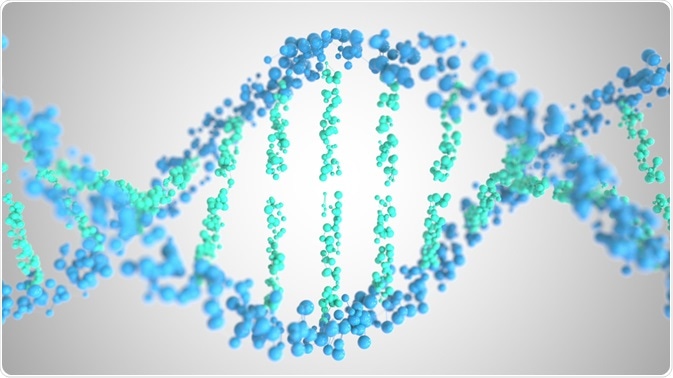Acatalasemia, also called acatalasia or catalase deficiency disorder, is a congenital disorder caused by mutations in CAT gene. The disease is characterized by severe deficiency of an enzyme called catalase.
Skip to
 Image Credit: Novikov Aleksey / Shutterstock.com
Image Credit: Novikov Aleksey / Shutterstock.com
What is acatalasemia?
Acatalasemia is a metabolic condition (inborn error of metabolism) associated with a very low catalase activity in erythrocytes. Catalase is an antioxidant enzyme responsible for the breakdown of hydrogen peroxide into water and oxygen.
Acatalasemia represents a very rare genetic disorder with an estimated frequency of 1 in 31,250 of individuals in general population. According to various epidemiological studies, the prevalence of this disorder is 1 in 12,500 people in Japan, 1 in 25,000 people in Switzerland, and 1 in 20,000 people in Hungary.
Acatalasemia is inherited in an autosomal recessive manner and mostly remains asymptomatic. In some rare cases, the disease causes ulcer formation inside the mouth and death of soft tissue due to lack of oxygen (gangrene) - this particular condition is termed as Takahara disease. Moreover, people with acatalasemia are at higher risk of developing diabetes mellitus and atherosclerosis.
What are the causative factors for acatalasemia?
Acatalasemia is primarily caused by mutations in CAT gene that encodes catalase. A deficiency in catalase activity results in excessive accumulation of hydrogen peroxide due to insufficient decomposition. Although hydrogen peroxide at low levels acts as a signaling molecule, it is highly toxic at higher concentrations.
Through a series of chemical reactions, hydrogen peroxide can be converted into more toxic reactive oxygen species, which in turn cause oxidative damage to DNA, proteins, and lipids, leading to oxidative stress. However, the asymptomatic nature of the disease may be due to the compensatory action of other enzymes with catalase-like activity, such as glutathione peroxidase.
Mouth ulcers and gangrene associated with acatalasemia is mainly caused by hydrogen peroxide-induced soft tissue damage. In addition, hydrogen peroxide damages the beta cells of the pancreas and impairs insulin secretion. This may be the prime reason behind higher susceptibility of acatalasemia patients to diabetes mellitus.
In some people, acatalasemia is not associated with CAT gene mutation, suggesting that epigenetic and environmental factors may also be responsible for both the disease development and the ensuing complications.
How is acatalasemia diagnosed?
Initial diagnosis of acatalasemia is mainly based on examination of the mouth, which is followed by obtaining a thorough family history of the suspected patient. The diagnosis is primarily confirmed by various genetic testing, such as molecular genetic testing (study of a single gene or short portions of DNA), chromosomal genetic testing (study of whole chromosome or long portions of DNA), and biochemical genetic testing (study of amount or activity of proteins).
Next generation sequencing of the entire coding region of CAT gene and deletion/duplication analysis are most commonly used diagnostic methods for acatalasemia. The tests are mainly employed to identify the causative mutations in suspected patients.
How is acatalasemia treated?
Presently, there is no cure for acatalasemia. Since the main symptoms of acatalasemia are oral ulcer and gangrene, periodontal treatments are generally considered to reduce tissue damage and improve oral hygiene.
Regarding gene and enzyme therapy, animal studies indicate that implantation of artificial cells containing exogenous catalase can replace the non-functional endogenous enzyme and improve the conditions associated with acatalasemia. However, no human studies are presently available to establish this fact.
Further Reading
Last Updated: Feb 21, 2023